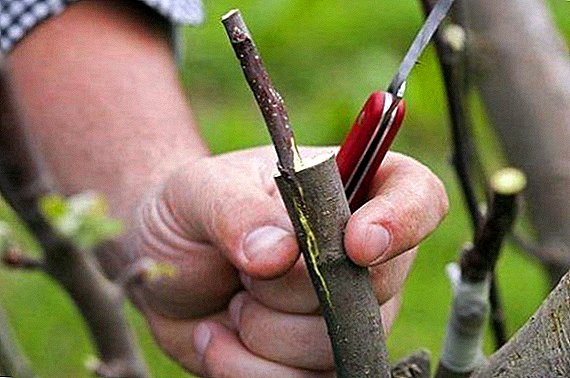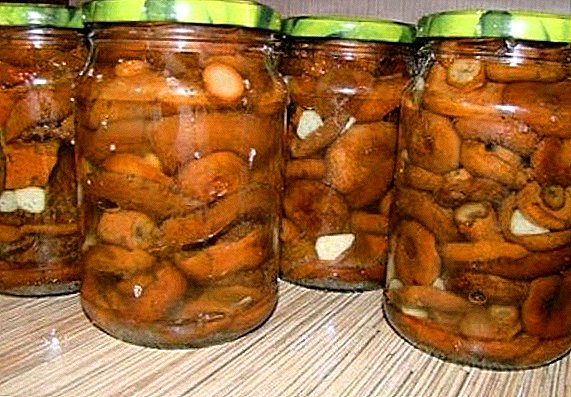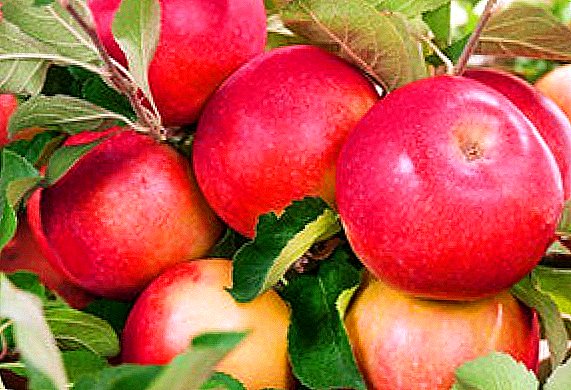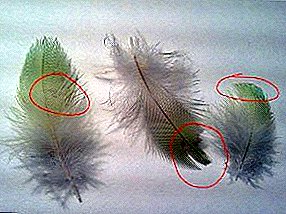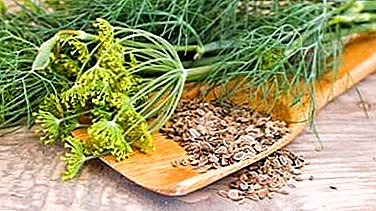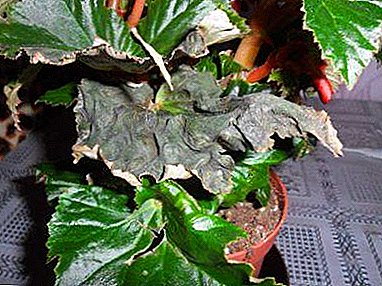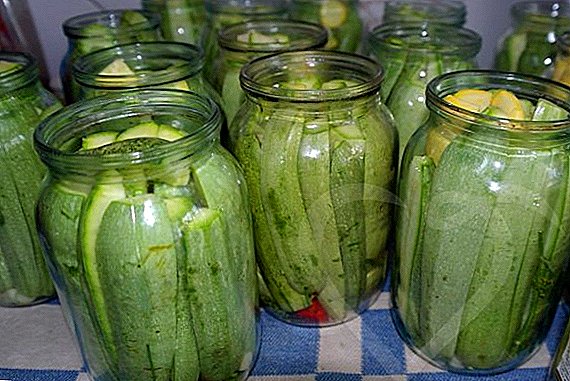 Today we can say that a person makes maximum use of the gifts of nature in all their forms and manifestations. Salting, smoking, boiling, stewing, roasting, frying and many other types of vegetables and fruits are used, each of which reveals a seemingly familiar product from a new side, giving it completely different flavors. In our article we will talk about the rules and methods of marinating for the winter and the further consumption of such vegetables as zucchini.
Today we can say that a person makes maximum use of the gifts of nature in all their forms and manifestations. Salting, smoking, boiling, stewing, roasting, frying and many other types of vegetables and fruits are used, each of which reveals a seemingly familiar product from a new side, giving it completely different flavors. In our article we will talk about the rules and methods of marinating for the winter and the further consumption of such vegetables as zucchini.
Marinated Zucchini: Appearance and Taste
We all imagine the appearance of a zucchini: it is a small greenish vegetable, about the thickness of a hand, having a soft, fleshy and juicy texture framing the seeds. The rind is rather thick and thick, but there are also varieties of zucchini, which have a thin skin that is easily cleaned with a knife. 
It is this fruit, which has a relatively small size and thin skin, should be used for pickling. During this process, zucchini becomes a little softer and much juicier, because it is soaked with brine and marinated additionally in its own juice. Such a vegetable will have a crispy and juicy texture, and its taste depends largely on the brine and spices you choose.
Check out the best recipes and methods of harvesting zucchini for the winter.Due to its natural qualities, zucchini is tasteless in taste, but it has an excellent absorbing property, which helps it to acquire different original taste characteristics, which are given to it in the cooking process.

Did you know? In addition to excellent taste, zucchini has a very low calorie value, which does not exceed 25 kcal per 100 grams of product. And besides, this gift of nature contains an incredible amount of valuable vitamins, minerals, trace elements and amino acids, including vitamins C, B1, B2, as well as nicotinic, malic and folic acids. Of the trace elements here are molybdenum, titanium, aluminum, lithium, zinc, etc. Also in the zucchini composition there are salts of phosphorus, potassium, magnesium and calcium.
Features of product selection
To get the juicy texture of the marinated zucchini melting in your mouth, you should correctly go through all the stages of its preparation, starting with the selection of the fruit for pickling and ending with the storage rules in winter. 
So, you should follow some recommendations when choosing vegetables for pickling, namely:
- Choose only young fruits no more than 20 centimeters in length, and such a vegetable should not exceed the girth of your hand in diameter.
- Thin skin and the minimum number of seeds will also be positive factors for selection.
- You can also pickle very small vegetables, the size of which barely reaches 10 centimeters.
- Vegetables must be clean, without any mechanical or natural flaws.
- Carefully inspect selected fruits for putrefaction.
- Buy only solid green squash with a peduncle of rich green color. A dry or brown pedicel indicates that this vegetable is too old for pickling and consumption. Soft specimens also peressel and are not suitable for marinating.

Important! To make the marinated zucchini ready to have a pleasant appearance, you should peel off the skin, since during the marinating process it can become tough.
How to pickle zucchini: step-by-step recipe with photos
We have already figured out that the zucchini is very healthy and tasty, and also listed the necessary recommendations for choosing fruits. Now it's time to unlock the secrets of marinating zucchini in a step-by-step recipe.
Kitchen appliances and utensils
You will need:
- cutting board;
- knife;
- cans with screw caps;
- pan for marinade and ladle;
- pan for sterilizing cans;
- kitchen towel to sterilize cans;

If you want zucchini to not lose so many useful qualities during processing, learn how to freeze and dry zucchini at home for the winter.
Required Ingredients
For the preparation of pickled zucchini used this proportion of ingredients:
- 1 medium-sized squash;
- 1 carrot;
- 1 onion;
- 3-4 cloves of garlic;
- bunch of dill;
- 1 tbsp. l mustard seed;
- 15 peppercorns;
- 15 allspice peppers;
- 5 bay leaves.

For the marinade:
- 1 l of water;
- 1 cup of vinegar (3%);
- 2 tbsp. l salts;
- 1.5 cups (330 g) of sugar;
Important! In order to calculate how much marinade you will need depending on the volume of vegetables, you should fill a jar with squash water. After covering the top vegetable bars with water, it is poured into a measuring cup, thus recognizing the necessary dose of liquid for one jar. Further, this amount is simply multiplied by your number of cans.
Step by Step Cooking Process
- First, all ingredients should be thoroughly washed and dried with a paper towel.
- Now divide the zucchini into three parts and peel it (the pedicle also needs to be cut off). After that, cut each of the three parts in half and remove all the seeds (it is convenient to remove with a tablespoon).
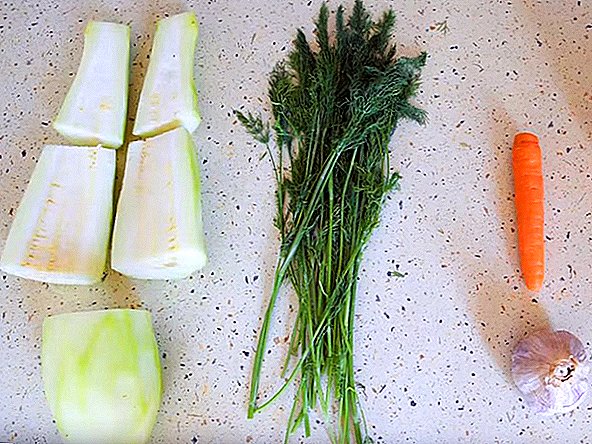
- Each piece of zucchini cut into large strips (chopsticks).
- Cut the dill by removing the coarse stem elements. Also cut carrots with ringlets (if it is too large, then you can divide the ringlets in half or into four parts).
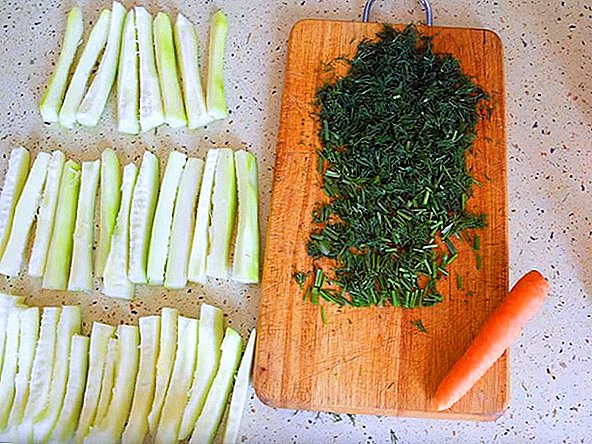
- 3-4 cloves of garlic crumble into small slices, and divide the onion in half and chop into half rings.

- Place the onion, garlic, carrot and dill in equal portions into the pre-sterilized jars.
- Tightly complete vegetable sticks (vertically, as when canning cucumbers).
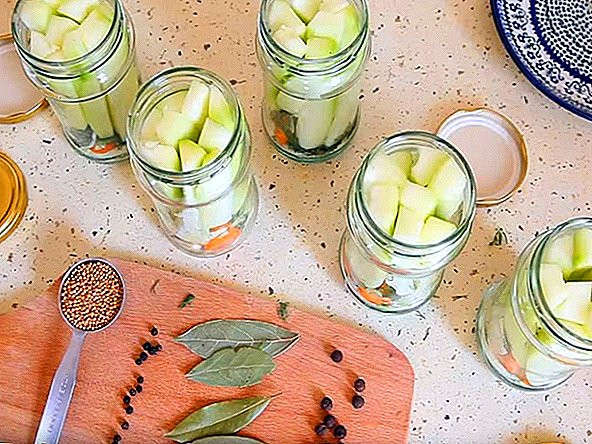
- Spread in equal parts spices (mustard, pepper, allspice, bay leaf).

- Now do the cooking of the marinade. Pour water into a saucepan, then add sugar and salt there. Bring this mixture to a boil, stirring. Wait for the sugar and salt to dissolve. At the end, pour in the vinegar.
- Fill the glass containers with hot marinade.
id: 62128
- Seal with covers.
- Lay out the bottom of the pot with a cotton towel, then place the jars in it and cover the jars with water. Bring water to a boil and sterilize the jars for 7 minutes.
- After remove from heat and allow the tanks to cool completely.
- Store pickles in a dark and cool place.




Did you know? For a long time, about 3 centuries, zucchini in Europe were grown only as ornamental plants due to their yellow flowers of large size. Now zucchini flowers are also used in cooking.
We change the taste of pickled zucchini (recipes)
The classic and versatile recipe for marinating zucchini presented above can be varied in many ways, the most interesting of which we cited in our article.
Squash in Korean for the winter
Ingredients:
- 1 kg of peeled zucchini;
- 2 carrots;
- 4 things. onions;
- 1 head of garlic;
- 1/2 bag of Korean carrot seasoning;
- 1 tbsp. l salts;
- 1/4 cup sugar;
- 1/2 cup of vegetable oil;
- 1/3 cup table vinegar;
- 5-7 small cucumbers.


Everyone knows that zucchini has many useful properties. Read whether it is possible to eat zucchini raw, how many contain calories and nutrients and what is good for the body.
Cooking:
- Squash fruits, carrots and cucumbers should be grated and poured into a large saucepan (about 4-5 liters). During the marinating process the vegetables will settle.
- Next, chop the onion half rings and squeeze the garlic through the garlic.
- After that, sugar, salt, seasoning for Korean carrots, vinegar and vegetable oil should be added alternately.
- Stir well and put in the cold (for example, on the balcony) soak for 24 hours.
- In general, after this stage, it turns out a wonderful snack, to match the carrot in Korean. But if you want to roll up such a salad in banks, then you have to go a few more steps.
- After a day, spread the resulting salad in pre-sterilized glass containers and seal the covers. Next, using a kitchen towel and a pot of boiling water, make additional sterilization of cans (10 minutes in boiling water).
- Banks should be rolled up, cooled and stored in a dark and dry place.



Important! Some sources recommend sterilizing the jars in the oven at 150 degrees for 10 minutes. This method can be fraught with the explosion of glass containers. Therefore, use a proven method of boiling.
Marinated in Tomato Juice
Ingredients:
- 400 ml of tomato juice;
- 2-3 zucchini;
- 3-4 cloves of garlic;
- 4 tbsp. l vegetable oil;
- 4 tbsp. l table vinegar;
- 1.5 Art. l Sahara;
- 1 tbsp. l salts;
- bitter pepper (optional, to taste).


Cooking:
- Using the scalding, remove the peel from the ripe tomatoes, then puree them with a blender, turning them into tomato juice. If you have ready juice, you can skip this step.
- Put the finely chopped garlic into the prepared pan, send the sugar and salt there, pour all the tomato juice in, add vinegar and sunflower oil.
- Wait until this mixture boils, and then keep it on fire for another 5-7 minutes.
- Washed and dried with a paper towel squash cut rods with a length of about 3-5 centimeters and a side of square section 1 centimeter.
- Place the zucchini vertically in pre-sterilized jars, but not very closely so that the tomato marinade can fill the voids.
- Fill the courgettes with tomato marinade, cover the glass containers with lids and send for additional sterilization in a saucepan (cover the bottom with a towel) with boiling water for 10-15 minutes.
- Now banks can be sealed and turned upside down. Leave them to cool completely in the kitchen, then remove them to the place of long-term preservation.

Vegetables, fruits and berries are a priceless storehouse of vitamins that we lack so much in winter. Check out the best recipes for harvesting blueberries, apricots, sea buckthorn, cherries, viburnum, cranberries, gooseberries, cauliflower, lingonberries, red cabbage, rhubarb, ashberry, chokeberry, sunberry, green onions, broccoli, strawberries, squash, joshta and apples on winter
With cloves and coriander: spicy zucchini
Ingredients:
- 750 grams of peeled zucchini;
- 5 cloves of garlic;
- bunch of parsley;
- bunch of dill;
- 600 ml of water;
- 1 tsp ground red pepper;
- 2 tsp. salts;
- 4 tsp. Sahara;
- 1 tsp ground black pepper;
- 5 pieces. carnations;
- 0.5 tsp. ground coriander;
- 40 ml of table vinegar;
- 80 ml of vegetable oil;
- Bay leaf.


Cooking:
- The first step is to cook the marinade. To do this, pour spices into the boiling water: coriander, cloves, red and black ground pepper, sugar, salt and bay leaf. Bring the mixture one more time to a boil and add vinegar. After its introduction, turn off the stove, add vegetable oil and remove from heat.
- Carefully washed and peeled zucchini and seeds should be cut in any convenient way: circles, half rings, straws, cubes, etc.
- Crumble the herbs, removing rough stem elements, and finely chop the garlic.
- Mix zucchini with herbs and garlic.
- Now pour all this marinade. The temperature of the marinade is not important.
- Stir the mixture slightly and clean in a cool place to marinate for a day.
- The result is a ready-to-use product.



Features storage billets
Among the main rules for storing pickled squash fruits, one can single out the main thing: put the blanks in a dark and cool place with a minimum level of humidity. This place can be a wardrobe or a drawer in the dresser on the balcony, shelves of the bookcase in the basement or garage, shelves in the closet or any other furniture for storing your preservation. This type of preparation for the winter is no different from other pickles, and therefore the storage rules are similar.
Read how to prepare for the winter juice from grapes, gooseberries, chanterelles, sweet cherry compote, beans in tomato sauce, horseradish, red currant jelly, tomatoes, summer squash, mint, watermelons and currants.
Why do banks swell and explode, or mistakes hostess hostess
Banks can explode only when insufficient sterilization of the cans or ingredients immersed in them has been made. Due to such an error, microbes remain in the jars, which contribute to the fermentation processes and, accordingly, increase the pressure inside the jars. When the pressure exceeds a certain indicator, the cover does not stand up and breaks down. 
In order to avoid such an undesirable event as an explosion of preservation rolled up for the winter, you should thoroughly wash all the vegetables before pickling, sterilize the jars, boil the lids before spinning, and also boil the jars with squash preparations, as was indicated in the pickling recipe.
What to serve zucchini to the table
Zucchini, like a number of other canned vegetables, is a fairly versatile product that will look great in a separate form, as a snack on your table. Such salting perfectly fulfills the function of an additional ingredient to meat and fish dishes, but especially to baked chicken or turkey. Their sweet and sour taste is excellently combined with potatoes of all types of cooking, boiled cereals (buckwheat, rice, wheat and pearl barley), and also combines well with other pickled foods, like mushrooms. 
Due to the universality of pickled squash fruits and their original and unique taste, they will be an excellent addition to any second dish, but with soups or other first courses it is better not to mix them. Still, the appetizer should remain an appetizer, not the main course.
Do not be afraid to experiment and try to add zucchini fruits to any dishes and, perhaps, you will discover even more pleasant qualities of a multi-faceted palette of tastes of marinated zucchini. 
Preparing for winter, you should not neglect so useful and tasty vegetables as zucchini. Now you know all the important points and nuances of the process of choosing and preserving this vegetable for the winter at home, as well as you can give different flavors to your salting with the help of various additives and spices. Combining and experimenting with the addition of pickled zucchini in your favorite dishes, you will be able to reveal their taste qualities from various and, at times, unexpected sides.
Feedback from netizens about the benefits of zucchini and recipe.

I offer my very fast recipe for a tasty vegetable dish. So, take 2 very young zucchini, clean and cut into cubes. Of course, if these zucchini grew on your backyard bed, there is no need to remove the skin from them, well, and if it is vegetables from the store, then, of course, it is better to cut off the skin, because all chemicals (if used) are collected in it.
pour the sliced zucchini into a glass bowl in which we will cook it; add some vegetable oil; about a tablespoon of apple cider vinegar (for those who love quick, you can add two spoons, but for the sample, start with one); some salt (I like to use Tasty salt, there is a good set of spices and herbs); a little less than a tablespoon of sugar; it would be nice to add just a little white pepper - I discovered this aromatic seasoning thanks to the recipes from the House Is Tastier Company; mix everything thoroughly, cover with a microwave lid and place in the microwave for 6 minutes; 6 minutes have passed - fine, remove, mix, taste, do not add salt or vinegar, and maybe sugar; set back for another 6 minutes. EVERYTHING! Your vegetable "yummy" is ready. You can sprinkle it with finely chopped greens, for taste and aroma.









